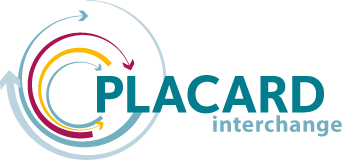How do we best communicate climate change adaptation (CCA) and disaster risk reduction (DRR) to civil society, companies and decision-makers?
Is there a different message or narrative when we are trying foster CCA or when we aim to improve disaster resilience?
These were some of the questions that we – Ingrid Coninx, Rob Swart and Julia Bentz, researchers from the PLACARD team – wanted to answer when we designed our session for the final conference of the EDUCEN project (29–30 March 2017) in the flood-prone community of Dordrecht in southern Netherlands.
Narrative is a rather academic term, so we used “compelling message”, and “story” instead. In fact, “narrative” means nothing more than a story, or storied ways of knowing.
In the case of climate change, there are different stories that are told, sometimes even very contradictory ones – see the examples compiled by Huffington Post, for example. Mostly, different stories are discussed in the context of climate change and its risks, rather than in the context of solutions, such as mitigation or adaptation. It is believed that narratives, due to their framing power as well as critical, theoretical and methodological potential can help to reshape adaptation practice (Paschen & Ison 2014). In DRR, narratives are also seen as potential contributors to improve resilience (see an example from the World Bank).
But is it possible to create a narrative that integrates the climate and the disaster perspective? If yes, what is the added benefit? And does the perspective differ from narratives that are conceived solely from either a DDR or CCA point of view?
We challenged the session participants’ with an experiment: imagine you represent a city council and create a compelling message to address both citizens and companies – the example suggested was Gorinchem, a river town similar to Dordrecht where the conference was held:
- From the climate change adaptation perspective, taking into account the various predicted impacts over longer time scales such as an increase in heatwaves as well as heavy rainfall events;
- From the disaster risk reduction perspective, considering the shorter-term risk of sudden disasters such as floods;
- Integrating both CCA and DRR in one message.
Interestingly, the messages, or narratives, that the three groups developed did not differ radically from each other, they all took prevention as an important goal. Apart from the perceived difficulty in communicating in a convincing, easily-understandable way, it didn’t seem to be difficult for the participants to integrate DRR and CAA into a combined message. Further more, a recent disaster event was taken as a frame to trigger citizens and companies into taking action to prepare for climate change. However, it was remarkable that this prevention point of view was much less evident in many of the other programme components of the conference, which very much focused on emergency response measures.
From the session we tentatively conclude that the development of narratives that integrate both the CCA and the DRR perspectives is quite feasible and useful to boost resilience and prevention. For instance, “climate change is expected to increase the frequency and magnitude of disaster events that the community has experienced in the past. Therefore, we need to build resilience”. The participants proposed that towns that have not yet experienced a disaster themselves could make use of recent disasters in familiar places in their communication. But they also warned that connecting each disaster with climate change may create a feeling of powerlessness, resulting in paralysed communities.

